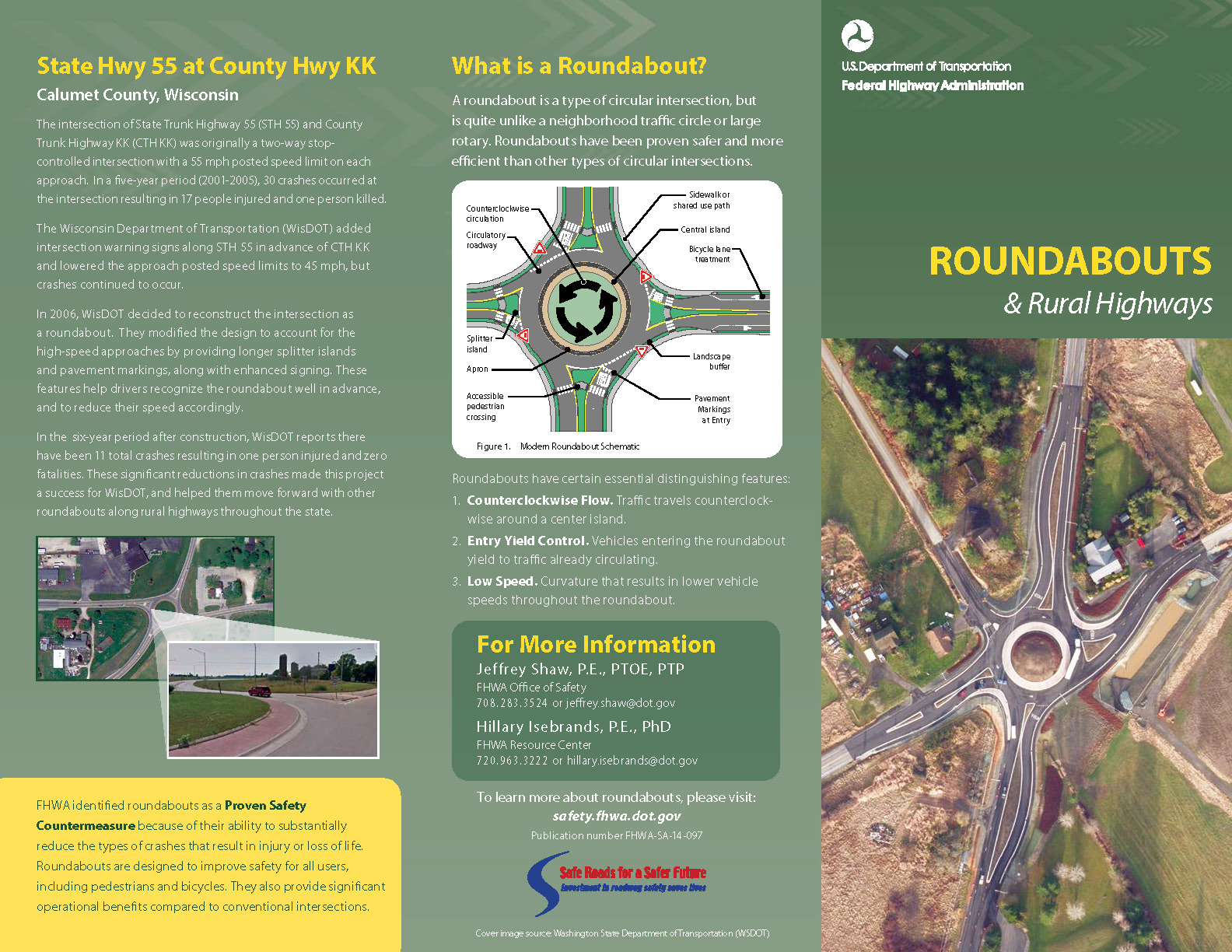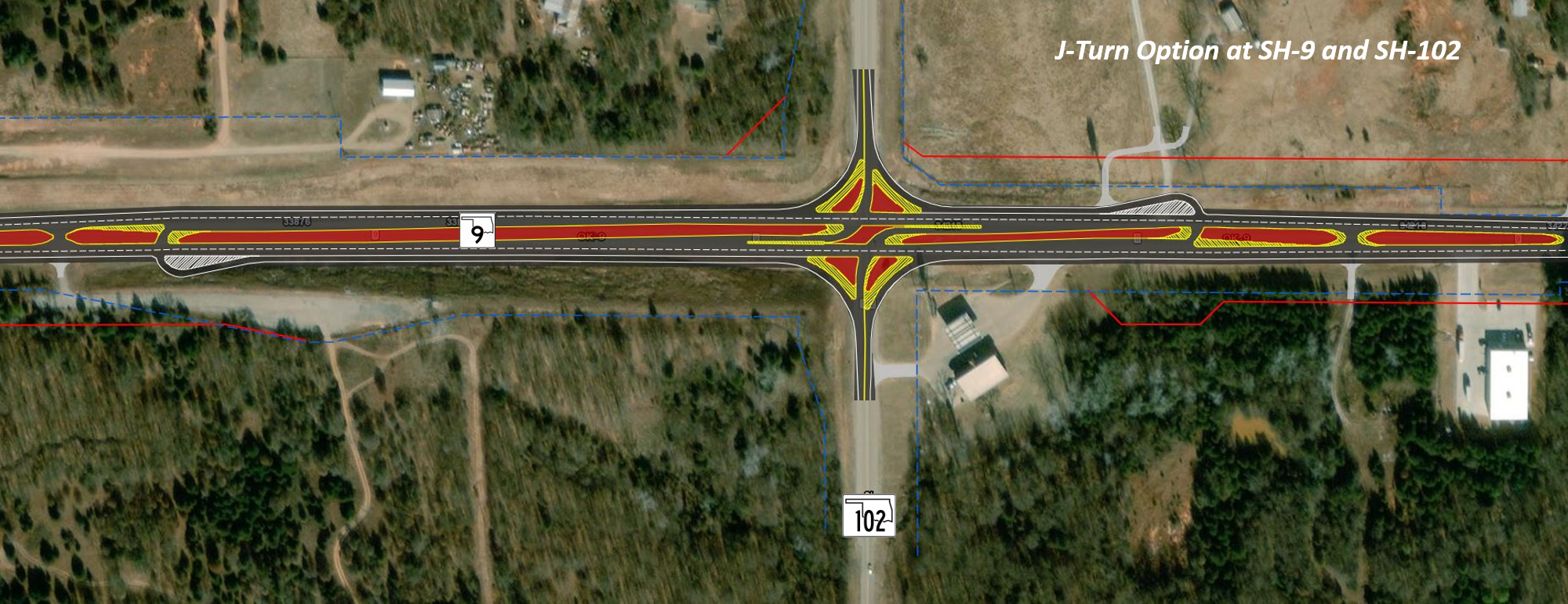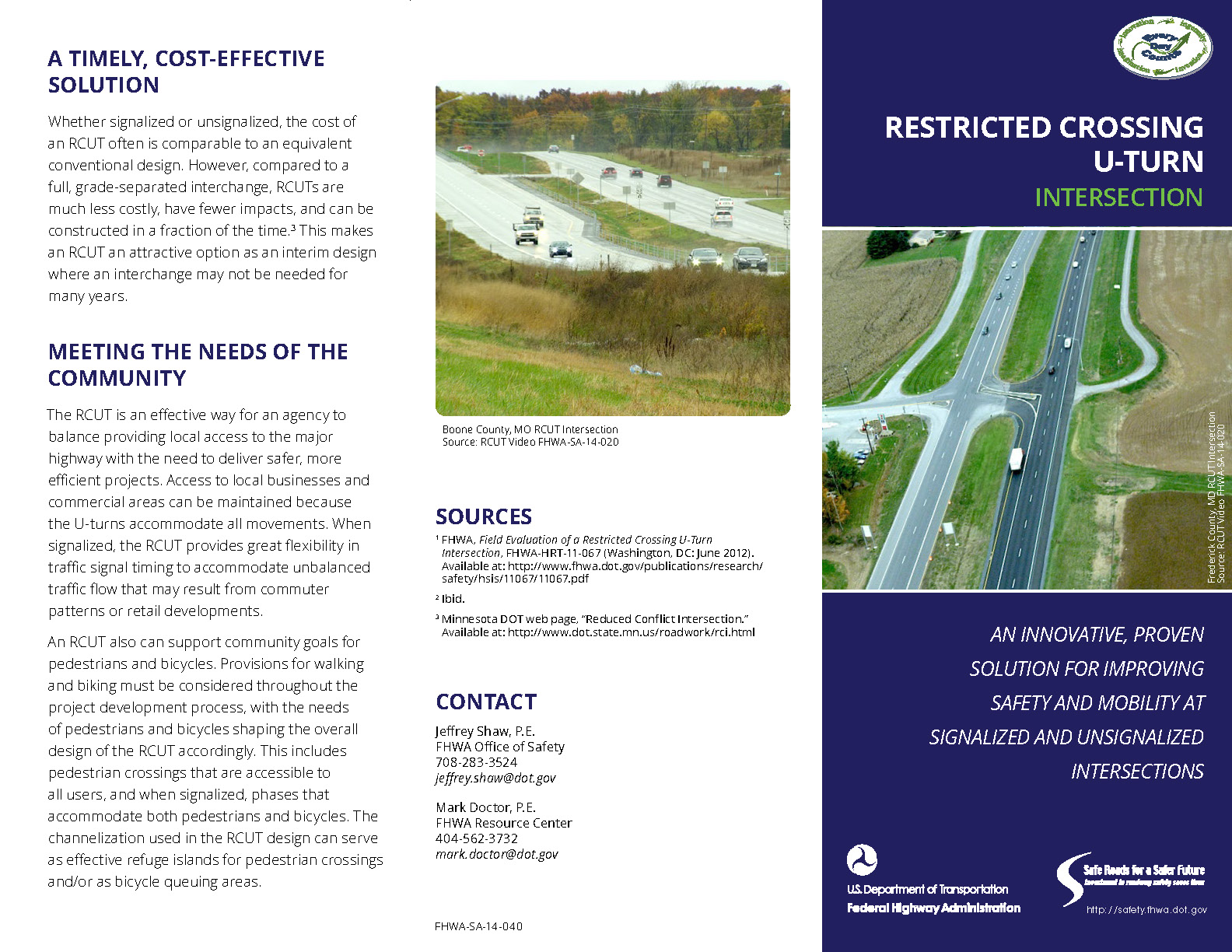JP 23288(08)
Intersection Information
There are two potential intersection designs that could be applied to the SH-9/SH-102 intersection in the future. These potential proposed future improvements can be viewed in greater detail on the Interactive Map page. Below you are able to view more detailed information on J-Turns and Roundabouts.
What is a Roundabout?
Modern roundabouts are a common form of unsignalized intersection control in use throughout the world. In a roundabout intersection, one-way traffic moves around a central island, and entering traffic must yield to circulating traffic. Modern roundabouts maximize safety by significantly reducing conflict points and minimize traffic delay due to the efficiency of yielding as opposed to required stopping at traditional intersections. Roundabouts are also more cost effective than traffic lights as they eliminate hardware, maintenance and electrical costs associated with the signals.
On this page is additional information created by the Federal Highway Administration and other state Departments of Transportation to learn more about modern roundabouts and how to use them.
Modern Roundabouts: A Safer Choice
Safety Aspects of Roundabouts

What is a J-Turn?
The J-Turn, or Restricted Crossing U-Turn (RCUT) is an innovative intersection design that improves safety and operations by changing how minor road traffic crosses or turns left at a major road. The J-Turn does not change any of the movements that are possible from the major road.
At a conventional intersection, drivers stopped at the minor road waiting to cross or turn left must navigate a complex intersection of two directions of traffic often traveling at high speed.
Alternatively, at a J-Turn intersection, all minor road traffic makes a right turn followed by a U-turn at a designated location – either signalized or unsignalized – to continue in the desired direction.
J-Turn Benefits
Has fewer conflict points than a traditional intersection, which can reduce the frequency and severity of collisions, especially severe T-bone collisions.
Keeps drivers from having to cross four lanes of high-speed highway traffic at once.
Optimizes the capacity of our existing roadway and reduces wait time for left-turning traffic.
Provides an effective tool for improving safety and reducing congestion while reducing construction costs.
How a J-Turn Will Work at SH-9 and SH-102
All north and southbound traffic on SH-102 will yield at the intersection with SH-9 and then make a right turn onto the highway.
Through traffic and left-turning traffic will then use a nearby highway median opening to make a U-turn and go back the opposite direction toward SH-102.
Traffic on SH-9 wanting to turn left on SH-102 will use the designated left turn lanes.




